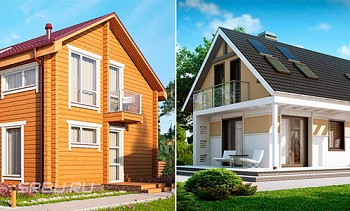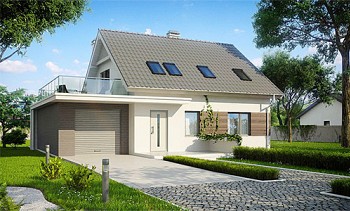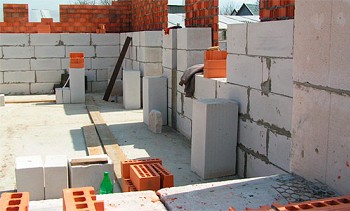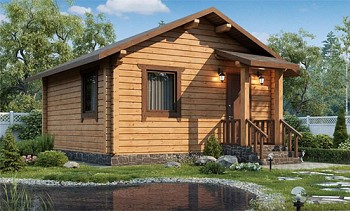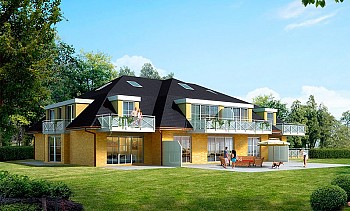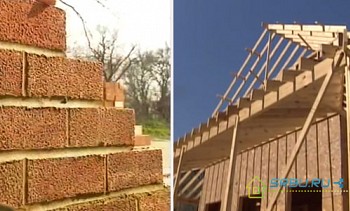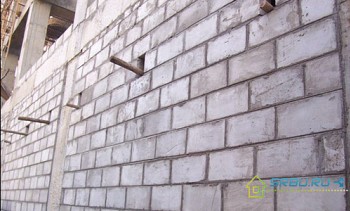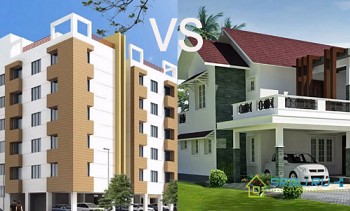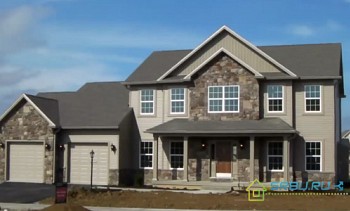What is the best way to build a house from - choose material for the walls of the house
In one old-old tale, three little pigs enthusiastically argued about what it is better to build a house from. Tale is a fairy tale, but even now many developers often argue about this. It is especially important what material the external walls will be made of. After all, it is they who are able to make the building durable, beautiful and long-lived.
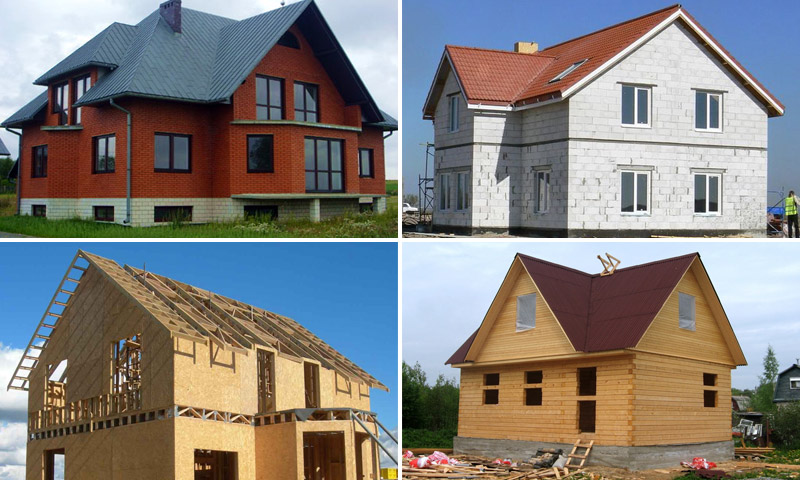
Content:
- What to consider when choosing material for the walls of the house
- Traditional brick
- Ceramoblock - durable and modern material
- Aerated concrete blocks - material for warm walls
- Good old wood - comfortable but troublesome
- Lightweight and inexpensive frame house
- Table: Comparison of various materials for walling
- Video: What materials are better to build a house from
What to consider when choosing material for the walls of the house
The walls take up a quarter of all the costs of building a house. And if you neglect this choice, you can incur serious expenses in the future. Therefore, we will take into account and consider the most important criteria and factors that must be considered when choosing a material for erecting walls of a house.
#1.The issue of price. Costs can be reduced by taking lightweight material for walls. Then you do not have to build a powerful and expensive foundation.
#2.Thermal insulation. Cold walls cost too much in winter. Therefore, before choosing a material, you need to do all the calculations, focusing on local climatic conditions. You can achieve the desired degree of thermal insulation by resorting to heaters. If you take material with good heat-insulating properties, then the walls can not be insulated, but it all depends on the region of development.
#3.Labor costs. The cost of time and effort can be reduced by folding the walls of large blocks, and not of small pieces. Such walls are erected 3-4 times faster and easier. The highest speed - in the construction of frame panel walls.
#4.Subsequent finishing costs. Modern smooth and aesthetic materials do not require additional wall decoration. You can save on this.
To determine what it is better to build the walls of the house from, consider the main types of suitable building materials, determine their characteristics of advantages and disadvantages.
Traditional brick
The brick house is able to stand for 100 - 150 years. He will survive well and rains with hurricanes and hail, and severe frosts, and searing heat. Brick walls have been laid since ancient times, so the technology of their construction is worked out to the smallest detail. Accordingly, it is easy to find a good master.
Ceramic or Silicate
Ceramic brick has a red color. It is made of fired clay, therefore it is very durable and has high environmental friendliness. Such material is not afraid of a cold and does not let water through. It is full-bodied (no more than 13% of voids) and hollow (up to 49% of voids). The shape of the holes in the brick can be round, square, oval, with horizontal or vertical arrangement. With an increase in their number, the insulating properties improve.
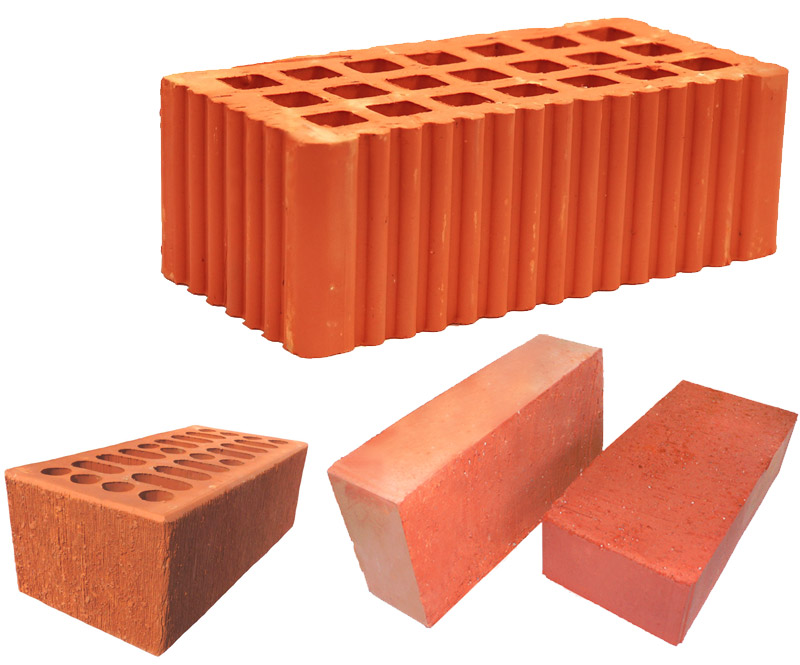
Varieties of ceramic bricks.
Silicate brick has a white color. Its main components are lime, sand and a small fraction of additives. This type of brick is also produced both solid and with cavities inside. The latter is lighter, and the walls from it are much warmer (because air is an excellent heat insulator). But a solid silicate brick can pamper the developer with a variety of colors. For the strength of the brick, it does not matter if it is solid or with cavities inside.
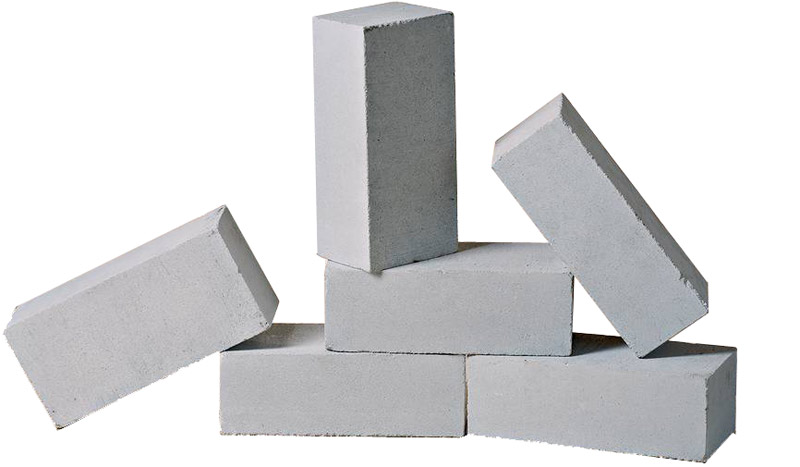
Silicate brick.
Private and front bricks and their purpose
Both types of bricks come in various applications:
- Ordinary brick is also called building brick - it is used for internal masonry of walls. For him, small cracks are not considered marriage. It doesn’t matter if the corners or ribs are slightly broken off, there are notches in the corners.
- The front (facing) brick should have a flawless appearance, not have notches and flaws.
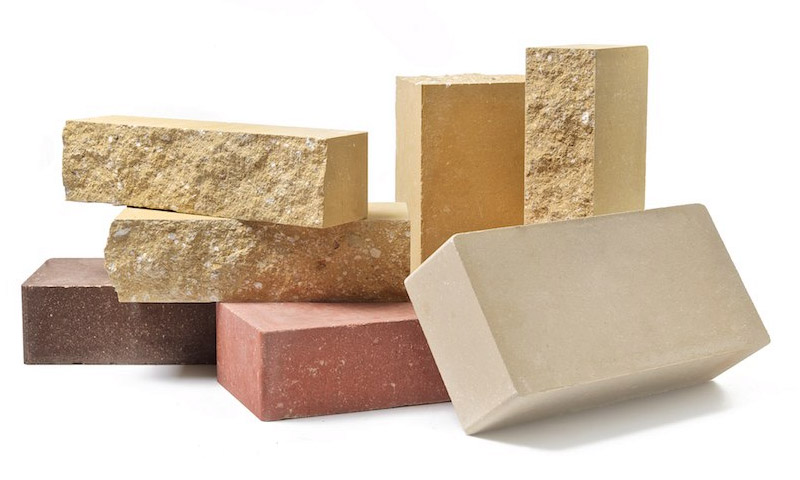
Some varieties of facing bricks.
On the strength of bricks and resistance to frost
Strength determines the brand of brick. There is a special marking for this indicator: the letter M and the number next to it (from 75 to 300). This number is the load maintained by this brand per one square centimeter. The larger this number, the heavier the brick. For the walls of a two-story or three-story house, the brands M100 and M125 are suitable. The base or foundation is laid with brick M150 or M175.
When choosing which brick to build a house from, one should also take into account frost resistance (the ability to freeze and thaw without being damaged at the same time). The letter F is selected to indicate this indicator, next to which is a number from 15 to 100. It means the number of freezing and thawing cycles without damaging the material. In warmer areas, F15 is sufficient for external walls, where it is colder - F25. The cladding is usually made with brick of the brand F50.
Advantages and disadvantages of brick
| Advantages of brick + | The disadvantages of brick - |
|---|---|
| Attractive look. | A lot of weight. |
| Durability. | Difficulty in laying. |
| The ability to realize any complex project. | Large costs to pay a good master. |
| Resistance to corrosion, mold and mildew. | The requirement of a solid foundation. |
| Incombustibility. | The need for a heat insulator. |
| Noise protection. | |
| Good heat retention. |
Ceramoblock - durable and modern material
In Europe, when deciding what material to build a house from, a ceramic block is often chosen. It is environmentally friendly (consists of a burnt clay mixture with wood sawdust), and you can build it cheaply and quickly. Such a house will stand for at least 150 years, and it can be made multi-story (safety margin allows this). On the sides, the surface of the ceramic block is corrugated, and inside there are pores. Separate individual elements using the groove-comb connection.
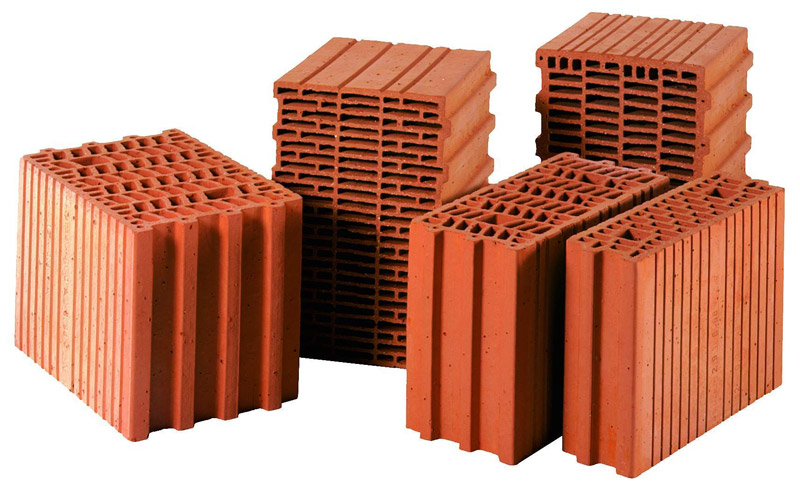
Ceramic blocks of various sizes.
Dimensions and characteristics of ceramic blocks
The sizes of ceramic blocks are different, but their height is standard, equal to brickwork. This is convenient - you can build a brick house project. A block measuring 50 x 24.8 x 23.8 cm weighs 25 kg, and its volume is 15 bricks of 3.3 kg each. One such plate is easier and faster to put, and less solution is needed. Blocks are 23, 24 and 25 cm wide. Their length (which determines the thickness of our walls) can be from 25 to 51 cm. A tongue-and-groove castle is located on this side.
For masonry of the load-bearing wall, blocks are taken, whose length is from 30 cm. And if you make walls with a thickness of 38 cm or more, they will not have to be insulated. Indeed, porous blocks have a low thermal conductivity - from 0.14 to 0.29 watts per square meter per degree Celsius. Thicker blocks (38, 44 and 50 cm long) are marked as M100. If thin, but reliable walls are planned, then you can take blocks of the M150 brand. Ceramoblock withstands up to 50 cycles of freezing and defrosting. This corresponds to the F50 brand.
Advantages and disadvantages of ceramic blocks
| Advantages of ceramic blocks + | The disadvantages of ceramic blocks - |
|---|---|
| The low weight, coupled with high strength, allows even multi-story buildings to be erected. And quickly and without unnecessary labor. | High price - this material for the walls of the house belongs to the elite group. |
| The mortar is used more economically than for masonry - there is no need to use it in vertical joints. | It is difficult to find a good master for the construction of walls, since the material is quite new. |
| Frost resistance at a high level. | Ceramic blocks are very fragile, so they must be transported and stored very carefully. |
| The material is able to withstand fire for at least 4 hours. | |
| Due to the porosity, the ceramic block perfectly absorbs noise and also keeps heat. | |
| The walls of these blocks "breathe", regulating humidity and creating an excellent microclimate. | |
| Such a house serves up to 150 years, while the thermal characteristics of the walls do not deteriorate. |
Aerated concrete blocks - material for warm walls
Externally, aerated concrete blocks look worse than a ceramic block, but they excellently hold heat. Walls of aerated concrete with a thickness of 30 - 40 cm. Built in one layer have the same characteristics as multi-layer made of brick or ceramic blocks. At the same time, a rather comfortable microclimate is kept in the room since aerated concrete effectively resists fluctuations in temperature and humidity. This material will not rot and deteriorate from time to time - after all, it has an unlimited service life. And in thermal insulation, it is 3 times better than brick. This is due to the air pores inside the material.
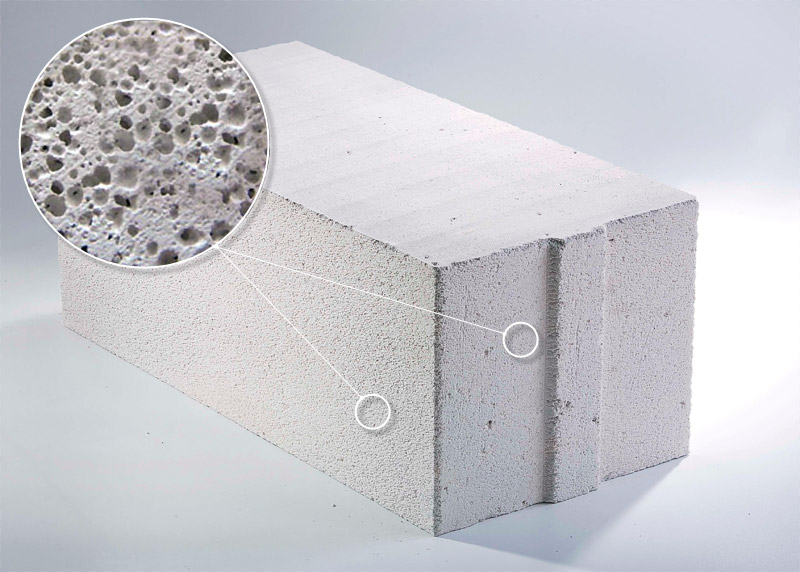
The structure of aerated concrete blocks.
Characteristics of aerated concrete blocks
Aerated concrete is cheap to transport and easy to install. If you need to cut the block, then an ordinary hacksaw copes with it perfectly. Mortar or special glue is needed a little, construction is fast. If the masonry is made with glue, then it turns out to be thin-knit, which contributes to better thermal insulation of the room. Made in the factory, lightweight blocks have a perfect cut, so that the walls are quite smooth. This saves on interior decoration.
Aerated concrete blocks are lightweight, which reduces the cost of their transportation, and this material can be used at various stages of construction. Due to the fact that the material is very easy to process, has a small weight and large dimensions, the bricklayer does less labor.
Aerated concrete is not a combustible material, which has a good indicator of compressive strength. It is made exclusively from natural ingredients and is absolutely environmentally friendly. This material is quite frost-resistant, and the level of vapor permeability of a house made of aerated concrete can only be compared with a house built of wood.
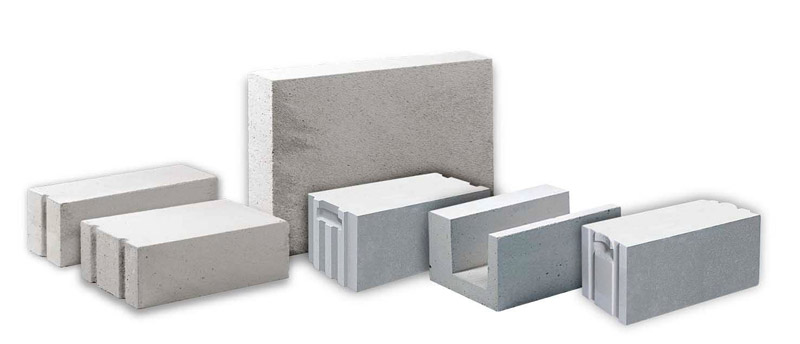
Varieties of aerated concrete blocks.
For aerated concrete, density (D) is the most important characteristic. It can vary - from 350 to 1200 kg./m3. Depending on the density, aerated concrete grades are distinguished, denoted by the letter "D" and a number. For the construction of a cottage, it is better to take the brand D500 - D900. A block with standard dimensions (20 x 25 x 60 cm) weighs 18 kg. It will replace up to 20 bricks (total weight up to 80 kg). Therefore, if you have not yet decided what to build a house from, take a closer look at this material.
- Read more about it in the material:Aerated concrete blocks deficiencies and declared characteristics.
Advantages and disadvantages of aerated concrete blocks
| Advantages of aerated concrete blocks + | The disadvantages of aerated concrete blocks - |
|---|---|
| The master puts lightweight aerated concrete 9 times faster than brick. After all, movements need to be done less. | The bending strength is low. |
| The geometric dimensions of the blocks are accurate. Smooth surface eliminates the need for additional alignment. | Over time, the material may crack. |
| Compressive strength is excellent, thermal conductivity is very small. | Keeping aerated concrete blocks on the street, you need to protect them well from the weather. |
| Resistance to fire is high. And thanks to only natural components in the composition of aerated concrete, toxins are not released during a fire. | We need a solid foundation. |
| Due to porosity, the material can withstand frost well, and steam passes no worse than wood. |
Good old wood - comfortable but troublesome
People thinking of what it is better to build a private house often come to mind with this particular material. After all, a wooden house is health and comfort. Its walls not only “breathe”, but also make the air healing, delaying all harmful substances. Walls made of wood create optimal humidity in the room and smell pleasantly.
The walls of the house made of wood have good thermal insulation and retain heat in the winter and cool in the summer. The cost of heating a wooden house can be significantly lower compared to brick walls.
Manual cabin felling
This method is the oldest, it was used by our grandfathers and great-grandfathers. We are talking about a log house made by hand. The trunk of the tree is cut to the desired length, and then locks and grooves are made on it. Next, the logs are connected, laying out the outlines of the house.You must wait for shrinkage - this is about a year, no less. Then they crack the cracks and sheathe the boxes of windows and doors.
Today, this method of building a wooden house is not used. Everyone can build a house out of logs. Such a structure is going, like a constructor, we will talk about this later.
Building a house from a bar is easier and faster
Neat smooth logs are processed in production conditions and marked. Ready-made parts from which the walls are assembled are delivered to the construction site. The beam can have different sizes and cross-sections (rectangular, square, in the form of the letter D). If it is profiled, it has protrusions and grooves for connection. An oblique cut helps drain excess water. A house of this material can be built with your own hands.
There are several varieties of timber for building a house:
Sawed timber is made of logs with a moisture content of 50 to 70%. As soon as they saw him, he immediately goes to the construction site. Because of this, the house is subject to shrinkage, (up to 10 cm). And sometimes cracks appear on the walls.
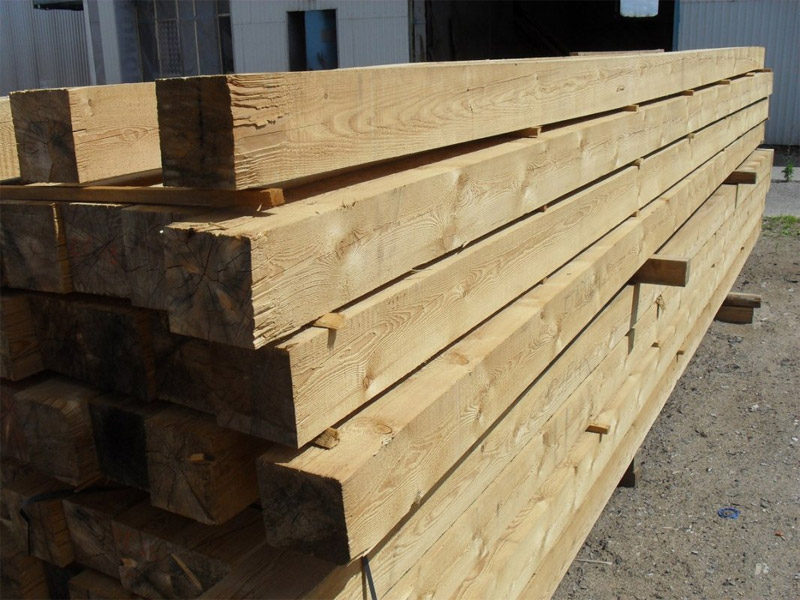
Photo: www.derevo.by
Planed timber is dried under production conditions. The humidity of the finished product is from 20 to 25%. After drying on a special machine, the products are rounded off. As a result, the shrinkage of the house, although it exists, is very small.
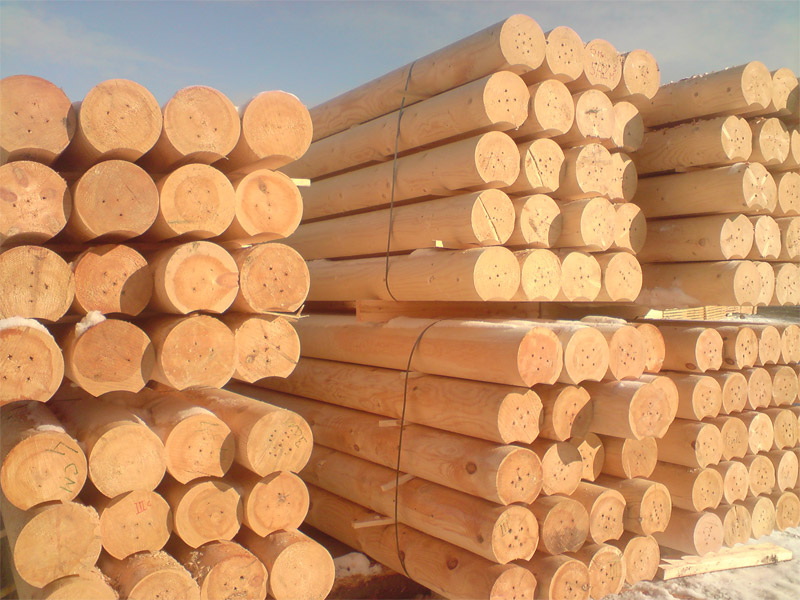
Glued beam is made of several layers of lamellas (special boards, dried to 6 or 10% humidity). They are glued together under pressure, while the fibers of adjacent layers are arranged perpendicular to each other. Finished products have a length of up to 12 m and a thickness of 7.5 to 30 cm. They do not shrink, do not deform and do not crack. Therefore, many believe that glued beams are the best material for the walls of a wooden house.
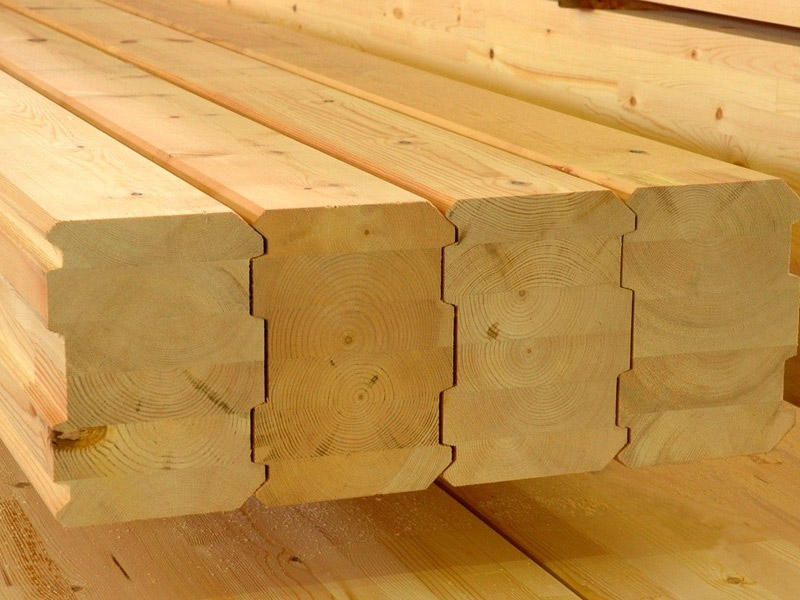
Advantages and disadvantages of wood as a material for erecting walls of a house
| Advantages of wood + | Wood deficiencies - |
|---|---|
| This is one of the most environmentally friendly materials. | The tree burns, can rot and “eaten up” by a fungus. To prevent this, all details must be treated with special preparations. |
| Building a wooden house is not so expensive than a brick one. | Shrinkage of the log house can take from 3 to 5 years. |
| In terms of thermal conductivity, wood is significantly superior to brick. | Sliced timber and log houses can crack. |
| The wooden house is very beautiful. Often, it does not require finishing either inside or outside. | |
| The foundation is lightweight and inexpensive. For example, columnar. | |
| It serves as a house made of wood, especially cut down by hand, for a very long time. |
Lightweight and inexpensive frame house
And what is cheaper to build a house from? For someone, the answer to this question is most important. Then take a look at wireframe technology. In addition to the cheapness of such a home, the assembly speed is also impressive. Just a few weeks - and you can move into a five-room house, which will be warm and comfortable.
The basis of such buildings is a frame made of wood or metal. It includes rafters, racks, trusses and other elements. Then the insulation is put, and on top of it all is sheathed with thick sheets of chipboard or OSB. The wall of such a house weighs 15 times less than a brick one. There is not much expensive wood for the frame - 5 or 10 times less than for a log house. Insulation is the main expense item. However, even the best one, it gives the cost of the wall 1.5 times cheaper than from timber, and compared to brick - 2.7 times.
Frame houses can be of two types:
Frame-panel house - assembled from ready-made shields. First connect them, then make partitions between the rooms. The final stage is the construction of the roof.
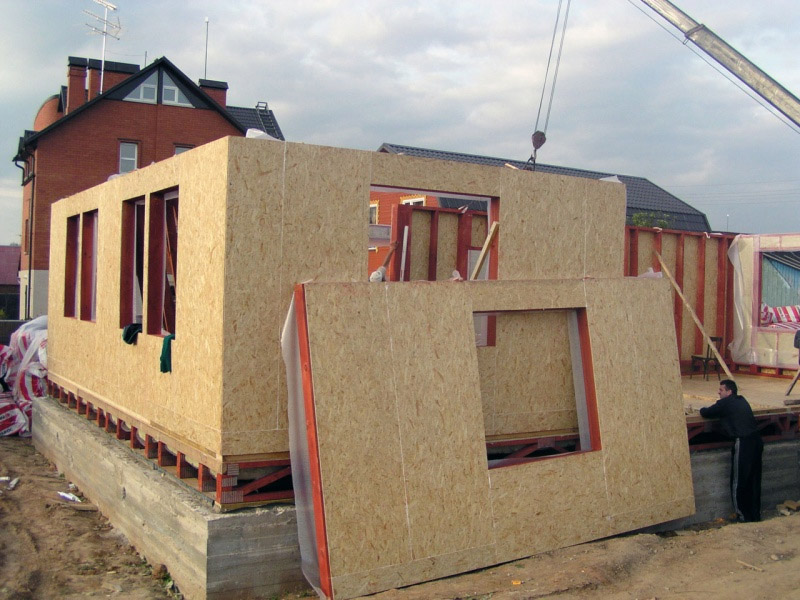
Frame house - made on the basis of the "frame" - a frame of beams and logs supported by a foundation. Then they put the rafters and make the crate. After the manufacture of the roof, sheathe the frame with a heater (mineral wool or PPS). At the end, external cladding is performed.
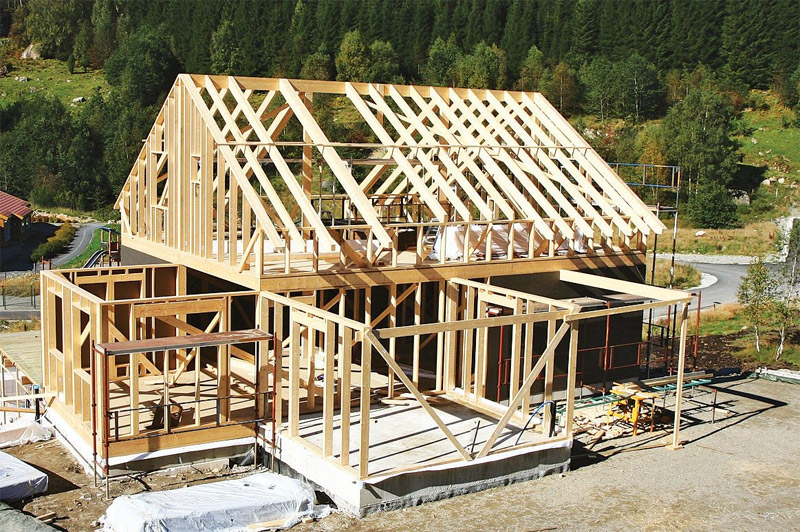
Since the main material in the construction of a frame house is a heater, when carrying out the correct calculations of the required amount, the structure turns out to be quite warm. That will allow you to significantly save on heating.
Advantages and disadvantages of frame houses
| Minimum values | Maximum values |
|---|---|
| Extremely low price and quick installation. | The walls are not very strong - they are easy to pierce with something sharp. |
| Good heat saving (when the heating is turned off in the cold at minus 10 ° С, the temperature will decrease by 2 ° С per day). | A house on a frame will last less than a brick or wooden one. |
| No interior trim needed, which reduces costs. | There is little room for imagination - they usually take standard designs. |
| Remodeling and improvement of such a house can be done easily. | The walls do not "breathe", so you need to do good ventilation. |
| Communications can be hidden inside the walls, which saves space. |
Table: Comparison of various materials for walling
| Material | Advantages | disadvantages | Cost of materials and works $ / M2 |
|---|---|---|---|
| Brick (thickness - 380 mm.) | Reliability; durability; environmental friendliness. |
The need for insulation; labor input; heavy walls; need a powerful foundation. |
75 |
| Ceramoblock (thickness - 380 mm.) | Reliability; durability; environmental friendliness; construction speed. |
Fragility of the material; difficult to find a specialist. |
82 |
| Aerated concrete (thickness - 380 mm) | Speed of construction; durability; reliability; environmental friendliness; thermal insulation. |
A solid foundation is needed; Low bending strength. |
60 |
| The rounded bar (diameter - 200 mm.) | Environmental friendliness; speed of construction. |
Shrinkage of walls; great dependence on the quality of the material and specialists. combustion; rot. |
44 |
| Glued profiled beam (200/230 mm.) | Environmental friendliness; speed of construction; lightweight foundation. |
Combustion; rot |
113 |
| Wooden frame + sandwich panels with insulation. | Speed of construction; lightweight foundation; good thermal insulation. |
The longevity of the house depends on the technology and quality of construction. | 44 |

